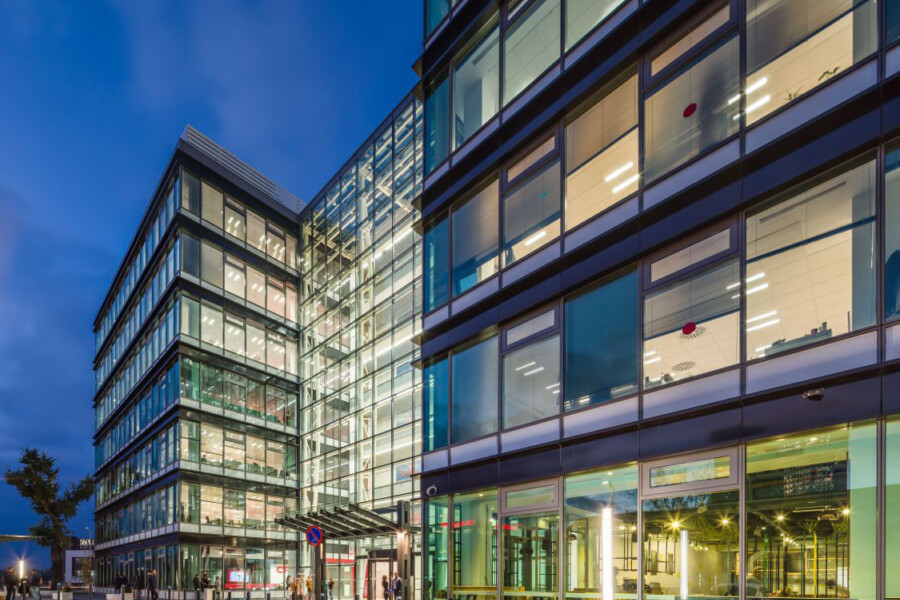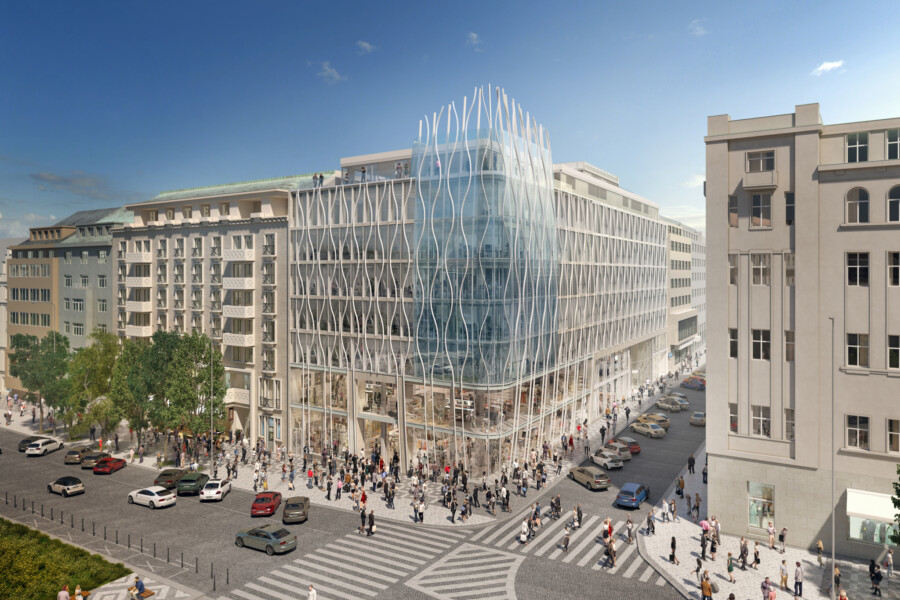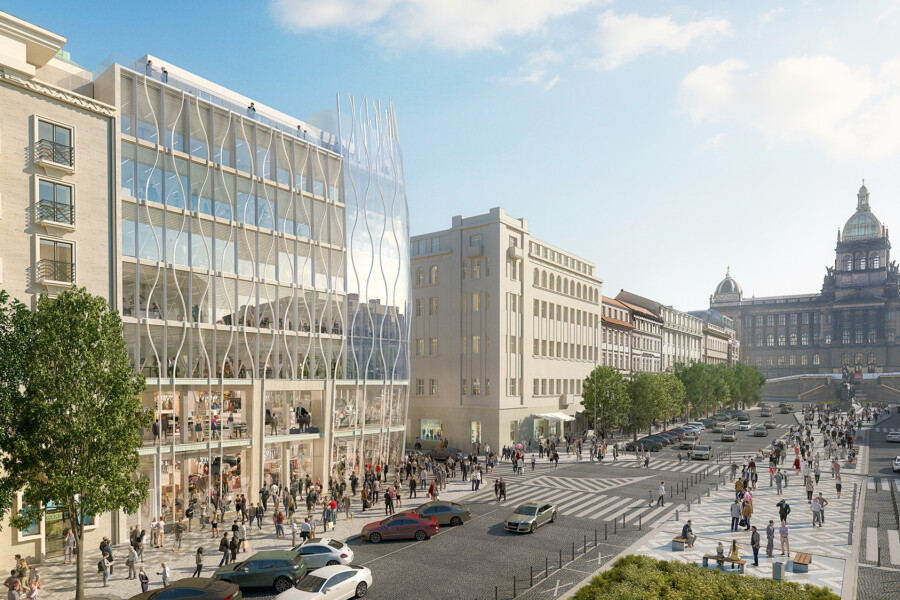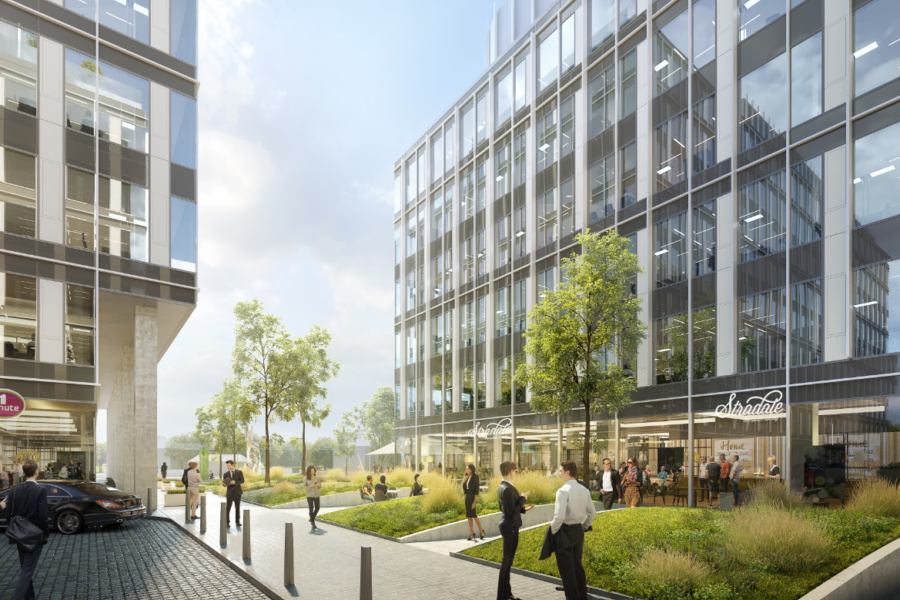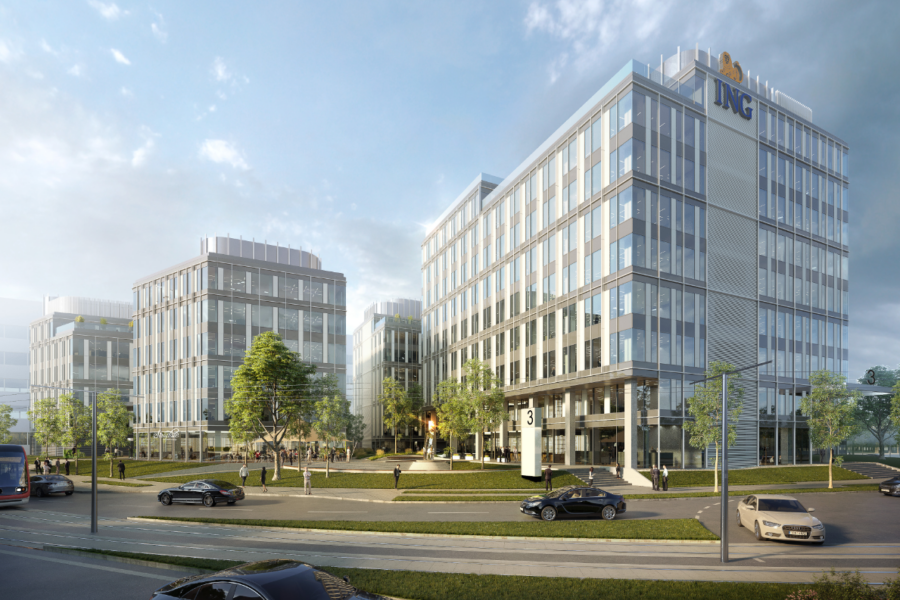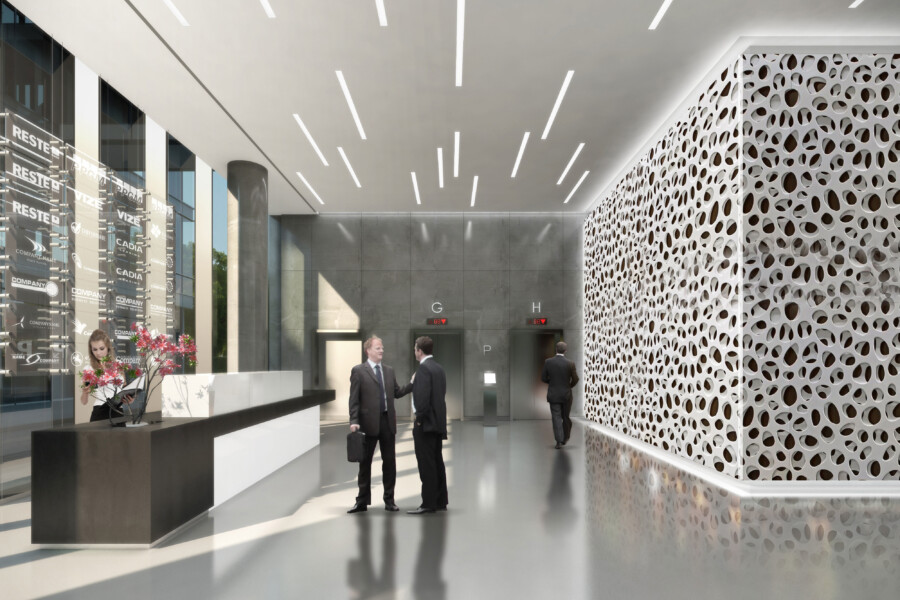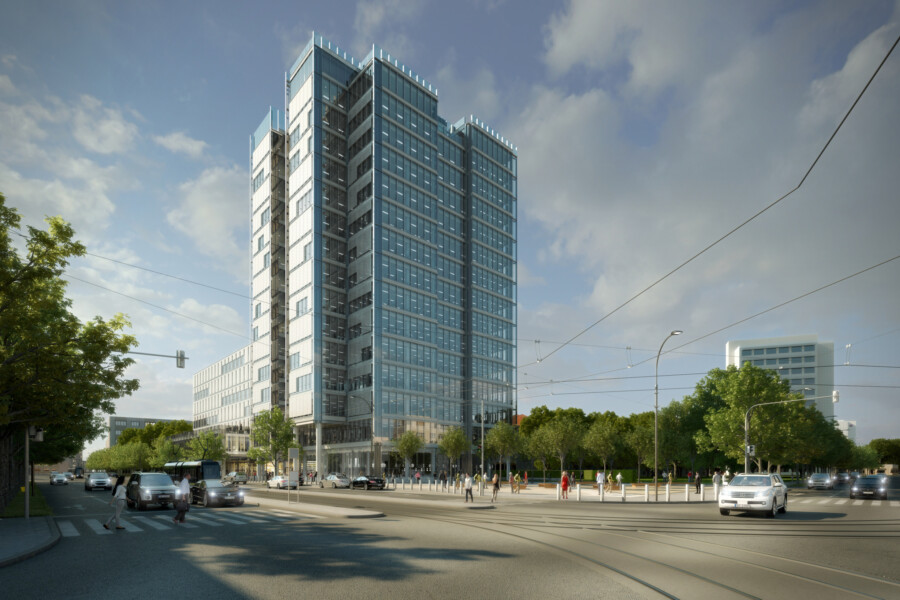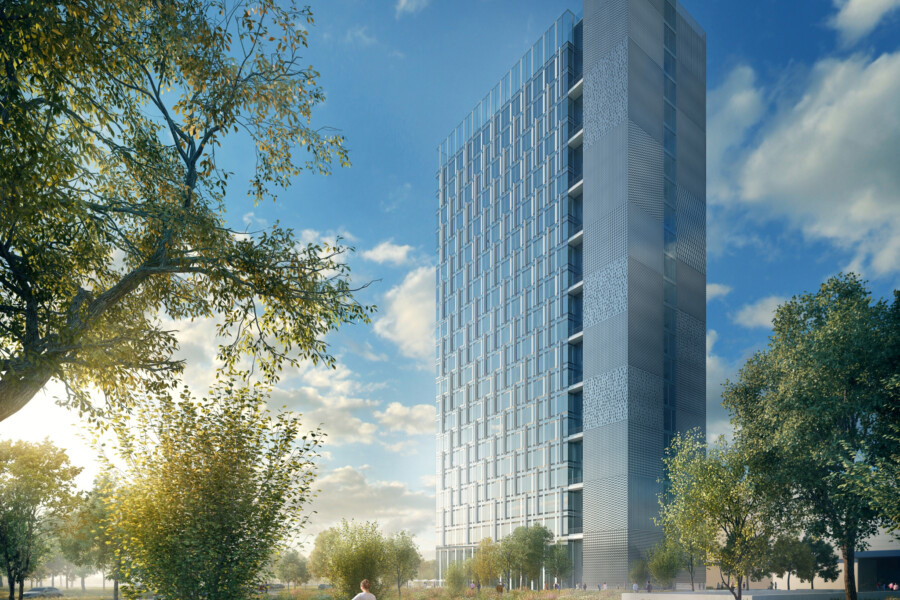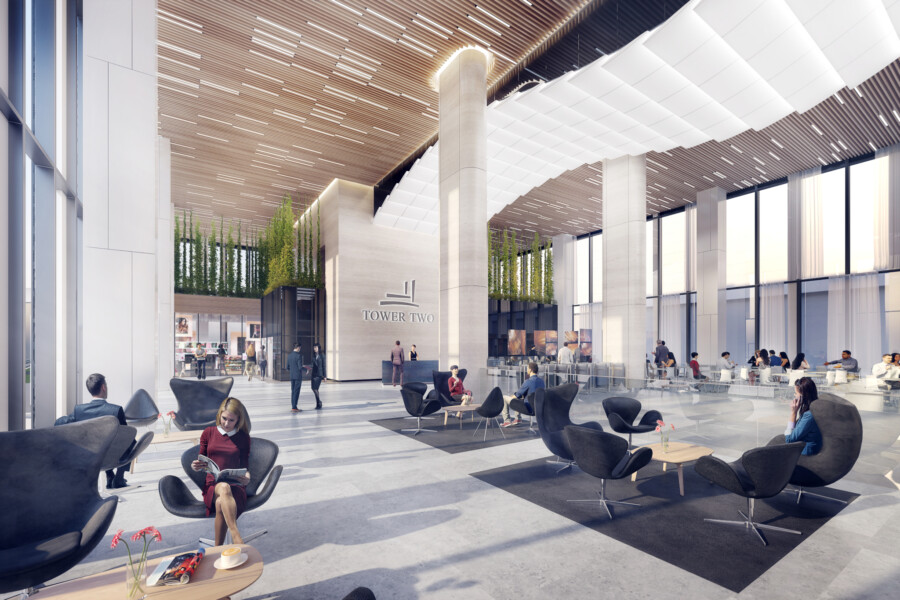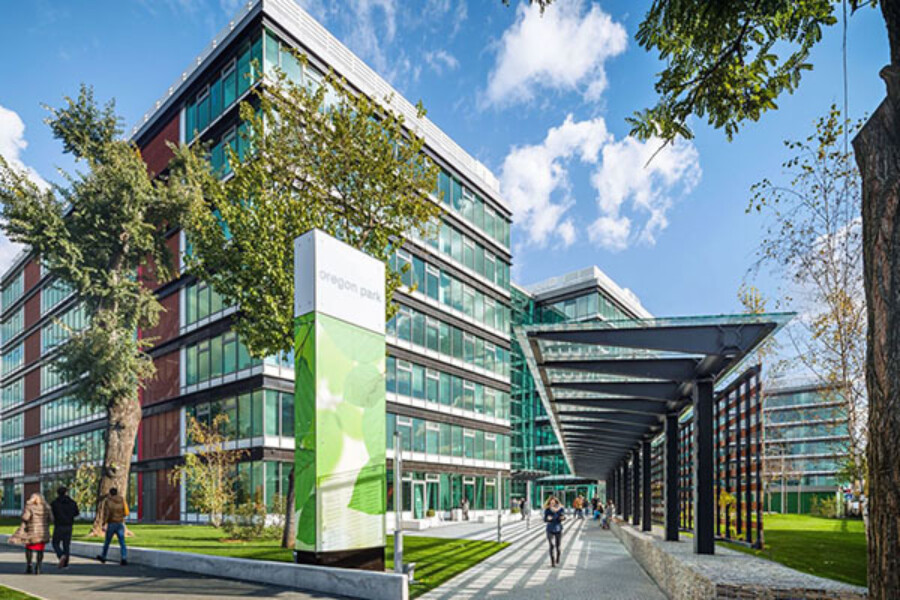
A new era for Chapman Taylor’s Prague studio
Chapman Taylor’s Prague studio was established in 1998, and has been actively involved in the CEE (Central and Eastern Europe) and SEE (Southern and Eastern Europe) regions’ rapid socio-economic development since then. With the team about to move into a brand new studio in the city centre, we talk to Director Jon Hale about the studio’s early years, the changes that have occurred since then and what we can expect from the team in the coming years.
Tell us about the origins of the Prague studio.
The studio initially opened in response to a major development that Chapman Taylor was working on for a large retailer in the Czech Republic – the masterplanning and initial construction phase of the Letnany shopping centre in Prague. This was followed almost immediately by another shopping centre, Centro Zlín, for Discovery Group.
In the early months of the studio, there were just two or three people. The workload quickly grew, however, with new projects across the CEE and SEE regions, meaning that we had to expand the team.
In early 2000, we met with Robert Neale, an agent-turned-developer who has since become one of our key clients. He was struggling with his existing architects to develop proposals for a major shopping centre to the west of Prague. The design team were unable to correctly interpret his brief, so we were asked whether we could respond flexibly to his requirements and deliver a building permit project in just eight weeks. The timescale represented a huge challenge, but we managed to achieve it. This led to a partnership that has seen Chapman Taylor deliver more than 280,000m² of leasable space over 18 years for Portland Trust in the Czech Republic and Romania.
Oregon Park in Bucharest - Flexible class A office space targeted at the IT and financial services sectors
The studio works throughout the CEE region, not just in the Czech Republic - tell us about that.
We enjoy excellent cooperation with our colleagues in the Warsaw studio, with whom we share a number of key clients. We benefit from being able to pool our client knowledge, exchange skills and share resources. We are also making sure that all cross-border opportunities are explored in depth.
Chapman Taylor’s CEE studios currently have projects in the Czech Republic, Slovakia, Hungary, Poland, Romania, Bulgaria, Georgia, Ukraine, Slovenia and Serbia. We have also undertaken projects in Azerbaijan, the Middle East, Africa and China.
What key projects has the studio worked on, in the Czech Republic and throughout the region?
As mentioned previously, we have worked closely with Portland Trust on several major office developments in Bucharest, including Bucharest Business Park, Floreasca 169A, Floreasca Park, Oregon Park and, currently, Expo Business Park. Expo is on site at the moment, with the first of the three buildings, fully leased to ING Bank, due for completion in mid-2019. Later this year, we will also complete another Bucharest office scheme – The Mark – a BREEAM Excellent, Class A office building, designed for our client S-IMMO.
In Serbia, the USCE Tower Two office building, which has a fantastic location in New Belgrade, is shortly going on site. This innovative project, which includes a façade-integrated natural ventilation system to help reduce cooling loads, also has an interesting “side-core” arrangement, which allows daylight into the lift lobbies and creates large, flexible workspaces which are in demand from the financial and technology sectors.
Works to improve the passenger experience at Prague Airport are continuing, and we are looking at a number of new transportation-led opportunities throughout the CEE and SEE regions. This is a sector that has lacked significant investment in CEE, especially in the commercial and passenger services side, and we see enormous potential in these schemes as catalysts for city centre regenerations.
Letnany shopping centre, our first project in the Czech Republic, which is now under new ownership, is currently being refurbished. The retail refurbishment trend is prevalent throughout CEE, where many shopping centres are undergoing their first major improvements in ten to fifteen years, and where the retail market is facing significant challenges from the growth of e-commerce and changes in customer expectations.
One of our most prestigious projects, the Corner House development on Wenceslas Square in Prague, is now on site. It will provide 32,000m² GBA of office, retail and parking space in a contemporary, sustainable building, which has been carefully designed to respect its prominent urban and historical context.
What changes have you seen in terms of market demand in recent years?
The initial influx of retail to the CEE region was based on establishing dominance by volume, but with very little concern for quality. The legacy of hypermarket-based centres is now being re-evaluated, with some centres closing completely and many undergoing significant remodelling in order to meet the demands of a much more mature market. New brands, fast developments in technology, changing shopper habits, a shift towards leisure and considerations for the wider needs of local communities are all driving this revolution.
The other significant change is in who the investors are. The early major investments into the region were largely of foreign origin. Recent years have seen a significant swing towards strong, locally based investors. Many of our key clients are home-grown and have an innate understanding of the market. With a strong local presence, they are able to deliver successful projects in a way that some international investors cannot always match. These regional investors are now attracting foreign capital, so the market is really reaching maturity and is comparable to that of the more established neighbouring countries’ markets.
How well-positioned is Chapman Taylor in the CEE market?
Chapman Taylor is very well placed to serve the new breed of investors with our local studios and the international experience that we can bring to our projects. We offer the best of both worlds – we have a global network behind us, which gives the team a constant awareness of changes in the commercial environment, access to the very latest international thinking on design and a wide resource of experience and skills to draw upon. Many local architects do not always have the benefit of this capability and are not always attuned to the client’s business requirements in the same way that we are.
We also have the option to explore new sectors in which the local architects themselves do not have great experience, because we have an international team behind us with world-class skills in those same sectors. When we compete for projects, clients want to see examples of finished similar projects designed by Chapman Taylor, so our Group experience is very important. For example, the know-how of our Transportation team in London has been of great benefit to the Prague Airport proposals. This is something which local architects can usually only deliver if they employ external consultants.
USCE Tower Two in Belgrade - A sustainably designed Class A office tower in a prominent city centre location
What can we expect in terms of the Prague studio’s future direction after moving to its new address?
We will see a focus in the next few years on rail and other transportation-related infrastructure. The commercial opportunities within and around railway stations have been neglected because the focus of the state-owned operators has been on renewing infrastructure and updating rolling stock, rather than addressing the overall user experience. There is a growing awareness that making the most of these strategic locations can have a major impact on the dynamics of city centres and the value of property within the proximity of transport hubs.
The residential sector is also busy, but it’s a market which is very specific to each country and which requires detailed local knowledge. It is difficult to transplant foreign residential design concepts, although there are specific areas of expertise that we can bring to the region. The Build-to-Rent sector is an area where experience from the UK is particularly relevant and in which opportunities in the region are growing. Property prices are increasing faster than almost anywhere in Europe, so the rental sector offers an alternative to the traditional build-to-sell model that has dominated the market in the last 15 years.
The Prague studio has also recently recruited some excellent interior designers and we are continuing to strengthen our position in the market for interior design across all sectors, from new F&B concepts to office interiors and hospitality.
The move to our new studio in June will give us the opportunity to reorganise the teams and to improve efficiency. We have a growing team of young Czech and foreign architects, many with international experience. We believe that the exceptional talent that our designers possess will be the key to our studio prospering in the years to come.
